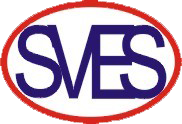
Precautions For Handling, Using And After Use Of Drill Pipe-2
2024-08-30 10:00Precautions For Handling, Using And After Use Of Drill Pipe-2
Continued....
2. When using drill pipeDrill Pipe :
9. The number of drill collars should be sufficient to ensure that the neutral point of the drill tool is always on the drill collar to prevent the neutral point of the drill string from being on the drill pipe, the lower drill pipe from bending, and early fatigue failure of the drill pipe;
10. A heavy drill pipe or a small drill pipe should be added between the drill collar and the drill pipe to alleviate the early fatigue damage of the drill pipe caused by the sudden change of the drill string section and stiffness;
11. When drilling, drilling parameters such as drilling pressure, drilling speed, and pump pressure should be adjusted to avoid severe vibration of the drill string, stuck drill or jumping drill, so as to avoid early failure of the drill string;
12. Pay attention to the change of pump pressure during drilling. When the pump pressure drops abnormally, immediately lift the drill to check whether the drill pipe is punctured to avoid excessive puncture holes on the drill pipe, drill pipe breakage and other major drilling accidents;
13. Reverse the shackle before going down the well each time, and make each joint rotate to the shackle once in three trips during drilling, so that each joint can be checked, applied with thread grease and buckled again;
14. When drilling, the upper column and the lower column should be frequently switched, and switched once each time the drill is tripped;
15. Wear the thread guard when going down the drilling platform after the drill pipe is used to prevent the thread from being damaged.

3. After using the drill pipe:
1. Clean and inspect after 1500 hours of use, check whether the thread and shoulder surface are bruised, whether the surface of the pipe body is seriously bruised, corroded, etc.,
Whether the pipe body is bent, etc., and pick out the defective drill pipes and place them separately; 2. If necessary, perform magnetic particle inspection on the joint thread and ultrasonic inspection on the pipe body. If defects are found, pick them out and place them separately in time;
3. Old drill pipes should be graded according to the drill pipe grading standards and marked. New drill pipes should be used as much as possible for complex wells such as exploration wells, deep wells, ultra-deep wells or large displacement wells;
4. Pay attention to rust prevention when placing the drill pipe, and try to place it on a stand at a certain height from the ground to prevent the drill pipe from rusting;
5. When placing the drill pipe, at least three pads should be used to separate the layers of the drill pipe, and the number of layers should not exceed 6 to prevent the drill pipe from bending under pressure;
6. Drill pipes that have been out of use for a long time should be inspected regularly to check whether they are bent or rusted. If the rust is serious, rust removal and oiling should be carried out in time to prevent rust.
